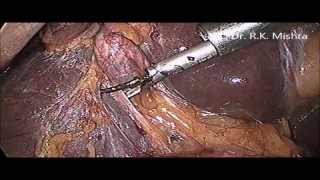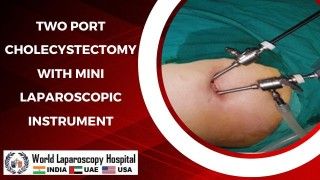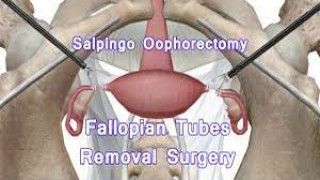Laparoscopic appendectomy is a minimally invasive surgery used to remove the appendix.
Add to
Share
2,025 views
Report
2 years ago
Description
Introduction: Laparoscopic appendectomy is a surgical procedure performed to remove the appendix. It is the preferred approach for the treatment of appendicitis, a condition characterized by inflammation and infection of the appendix. Unlike traditional open appendectomy, laparoscopic appendectomy is a minimally invasive procedure that offers several benefits, including smaller incisions, reduced postoperative pain, shorter recovery times, and improved cosmetic outcomes. In this comprehensive article, we will delve into the details of laparoscopic appendectomy, its advantages, and considerations for this minimally invasive approach. Procedure: Laparoscopic appendectomy is typically performed under general anesthesia. It involves making several small incisions in the abdomen, through which specialized instruments and a laparoscope (a thin, illuminated camera) are inserted. The laparoscope provides a magnified view of the abdominal cavity, allowing the surgeon to visualize the appendix and surrounding structures. The surgeon then proceeds to remove the inflamed appendix by using the laparoscopic instruments to dissect and ligate the appendix at its base. The severed appendix is then placed in a sterile bag or retrieved through one of the small incisions. In some cases, the surgeon may convert to an open procedure if the laparoscopic approach is not feasible due to complications or the presence of advanced appendicitis. Advantages of Laparoscopic Appendectomy: Minimally invasive approach: Laparoscopic appendectomy offers several advantages over open surgery, including smaller incisions, reduced postoperative pain, and faster recovery times. It results in less tissue trauma, reduced blood loss, and decreased risk of surgical site infections. Improved cosmetic outcome: The smaller incisions used in laparoscopic appendectomy result in less noticeable scars compared to the larger incision required in open surgery. Shorter hospital stay: Patients undergoing laparoscopic appendectomy typically experience a shorter hospital stay, allowing for a quicker return to normal daily activities and a faster overall recovery. Considerations for Laparoscopic Appendectomy: Patient selection: Laparoscopic appendectomy is suitable for most patients with uncomplicated appendicitis. However, patients with complex cases, perforation, or extensive infection may require an open procedure. The surgeon will evaluate the individual case to determine the most appropriate approach. Surgeon expertise: Laparoscopic appendectomy requires specialized training and experience. It is important to choose a surgeon who is proficient in performing laparoscopic procedures to ensure optimal outcomes. Patient factors: Certain patient factors, such as obesity, previous abdominal surgeries, and underlying medical conditions, may affect the feasibility and safety of laparoscopic appendectomy. The surgeon will take these factors into consideration when determining the most appropriate approach. Recovery and Follow-up: Following laparoscopic appendectomy, patients generally experience less postoperative pain, have smaller incisions that heal faster, and have a quicker recovery compared to open surgery. They are usually able to resume normal activities within a week or two, depending on individual factors and the extent of the appendicitis. Close follow-up with the surgeon is important to monitor the healing process, ensure proper recovery, and address any concerns or complications that may arise. Conclusion: Laparoscopic appendectomy is a minimally invasive surgical approach for the removal of the appendix. With its advantages of smaller incisions, reduced postoperative pain, shorter recovery times, and improved cosmetic outcomes, laparoscopic appendectomy has become the preferred choice for most cases of uncomplicated appendicitis. However, patient selection, surgeon expertise, and individual patient factors should be taken into consideration to determine the most appropriate approach for each case. As surgical techniques continue to advance, laparoscopic appendectomy is expected to become even more refined and offer further benefits for patients. Ongoing research and advancements in laparoscopic instrumentation and technology aim to enhance the precision and effectiveness of the procedure while minimizing complications. It is important for patients to have a thorough discussion with their healthcare provider to understand the risks, benefits, and alternatives associated with laparoscopic appendectomy. Each case is unique, and the decision to undergo surgery should be based on an individual's specific circumstances, the severity of appendicitis, and overall health. In conclusion, laparoscopic appendectomy is a minimally invasive surgical technique that offers numerous advantages for the removal of the appendix. With its smaller incisions, reduced postoperative pain, faster recovery times, and improved cosmetic outcomes, it has revolutionized the management of appendicitis. The procedure is safe and effective when performed by skilled surgeons experienced in laparoscopic techniques. By choosing laparoscopic appendectomy, patients can benefit from a faster and smoother recovery, allowing them to return to their daily activities with minimal disruption.
Similar Videos





